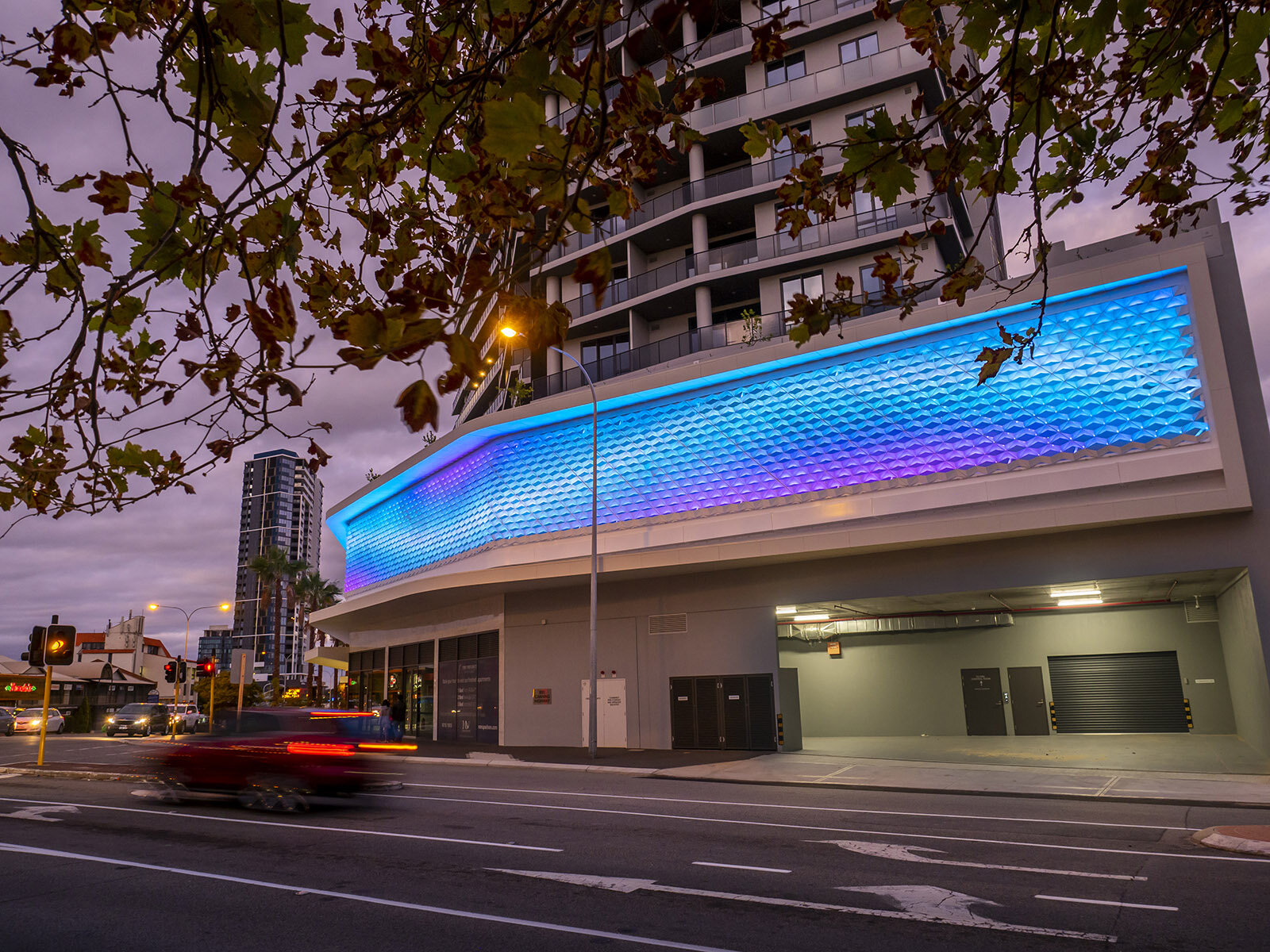
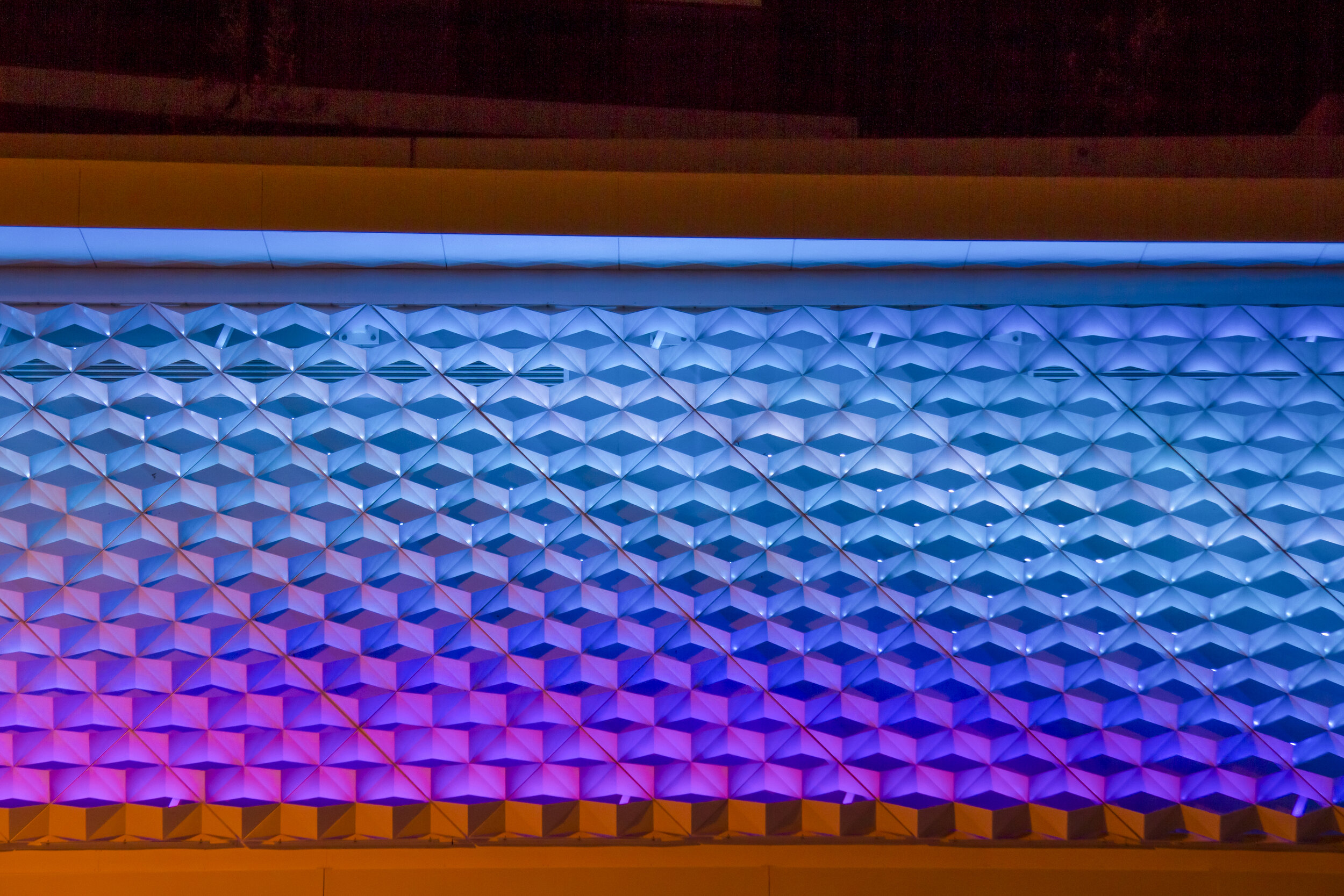
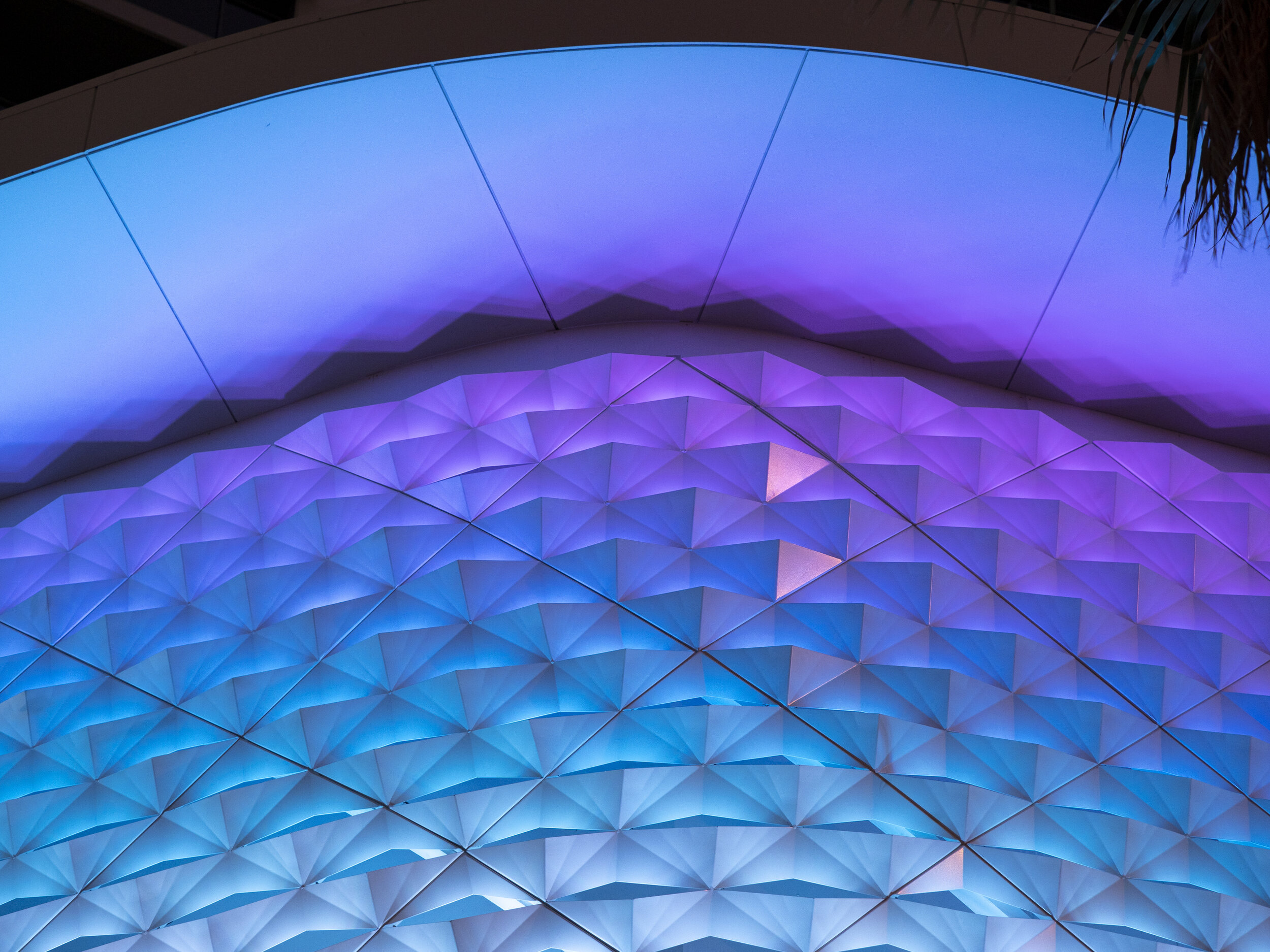
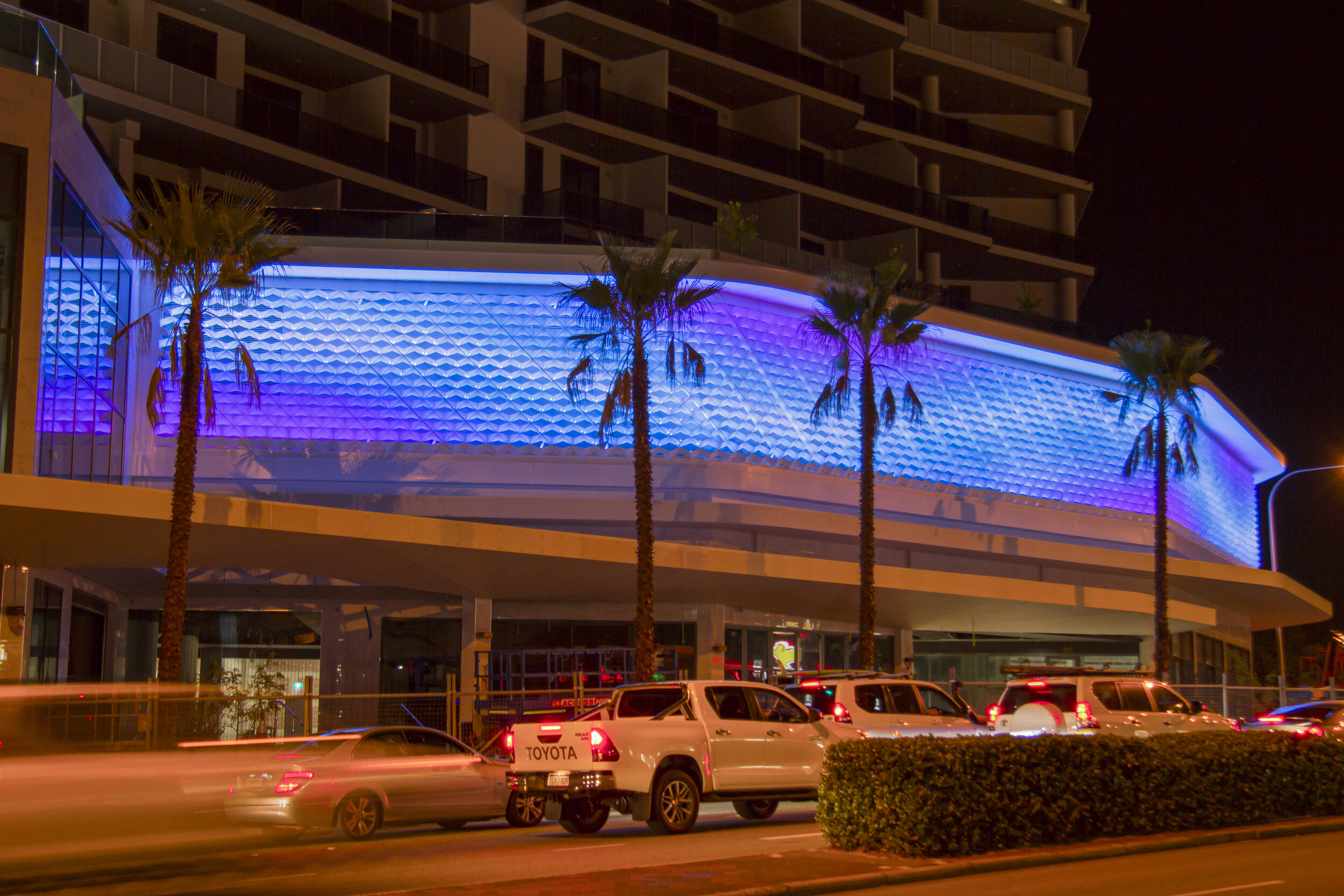
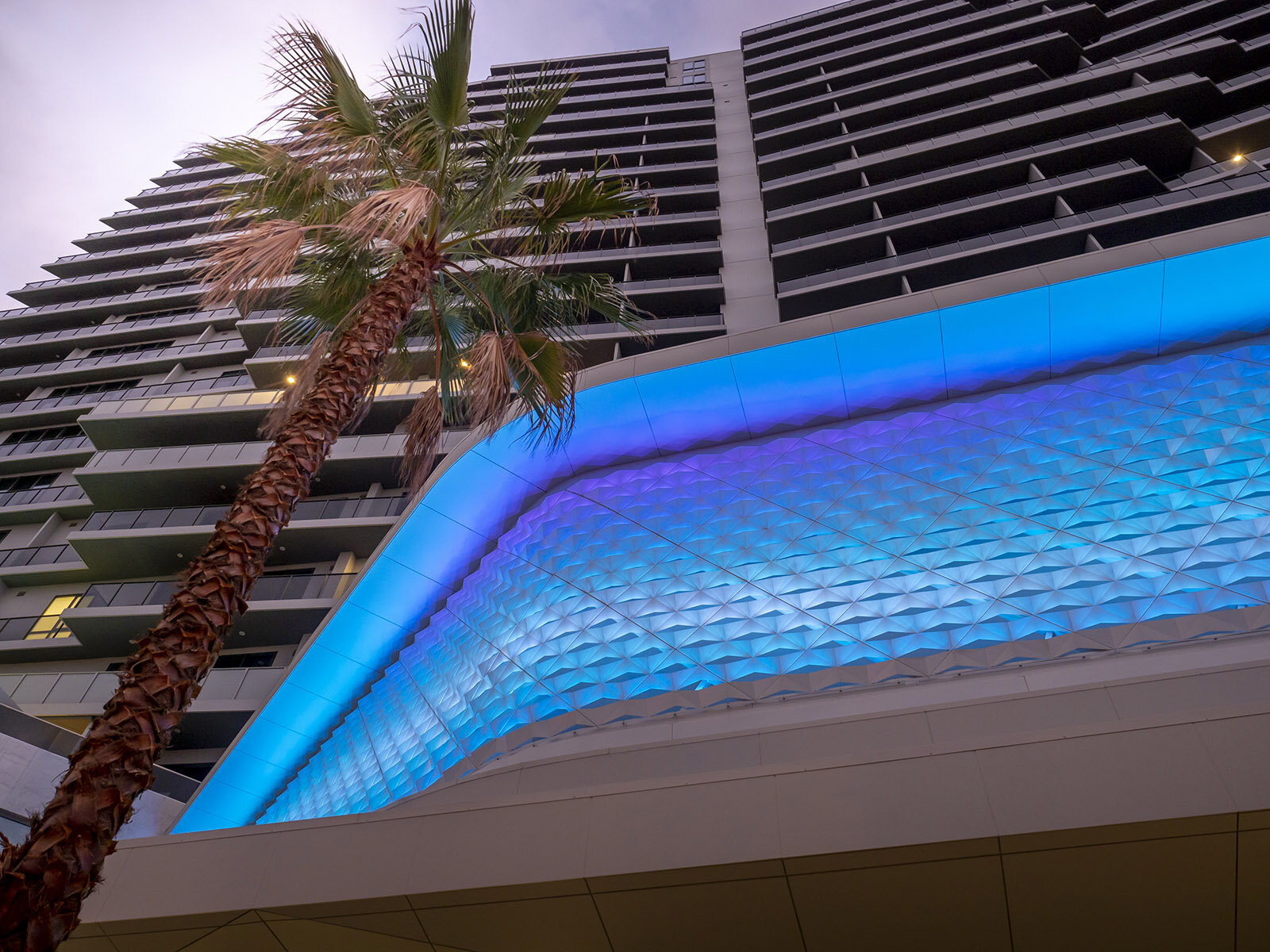

Undulation & Flow, 2016-20.
The Precinct apartments, Mt Pleasant, WA.
Podium facade cladding screen, featuring coloured programmed lighting.
Materials: powdercoated white aluminium sheet, arrayed in a folded and welded diagrid, plus Philips Color Kinetics LED lighting.
2100 individual LED nodes, featuring 7 dynamic animated programmes, alternating nightly. Programming: a collaboration with Light Application.
Computation Support: Dan Giuffre, if/Lab.
Architect: Woods Bagot. Client: Norup & Wilson.
Location: 893 Canning Hwy. Mt Pleasant, WA. Corner of Sleat Rd.
GPS coordinates: -32.01379164857646, 115.84746218527198

Undulation & Flow.
“Beautiful flowing abstract patterns of light, inspired by proximity of natural forces”
The artwork content has evolved from visual research inspired by the proximity to the river waters, the natural environmental conditions of shifting breezes, drifting clouds, the vista views and the leafy greenery of open spaces of the locale. Whilst essentially geometric and abstract in derivation, the design is also influenced by its siting adjacent to Canning Highway, which has its own ecosystem of ebbing and flowing traffic swells.

Undulation & Flow
Micro-tidal movements of the vast water bodies of the Canning Bridge area and Melville waters are the initial source of inspiration. Observations of the fluid movements of air currents, such as when the river breeze drifts through pennants, flags and yacht sails, are another layer of conceptual investigation, with similar visual qualities.

Undulation & Flow
On a more prosaic macro-scale, the Canning Highway itself is another source of inspiration, functioning as it does, like an artery of a living system, with pulsing and surging flows of traffic along its length. Viewed as an organism, it is yet another example of forces of flow at work, in the immediate surrounding area.

Undulation & Flow
On a sub-surface level, the river has fluctuating measures of marine salinity in different seasons at different depths. Nutrient levels of the Swan/Canning River system, and presence of various microscopic phytoplankton cells are similarly seasonal. These populations also rise and fall in abundance, in succession to one another, in an undulating, overlapping and repeating pattern over time. This data can be scientifically graphed as interweaving sine-curves. That graphical representation of natural forces and ecosystems becomes another common motif, influencing the programming of lighting patterns displayed.